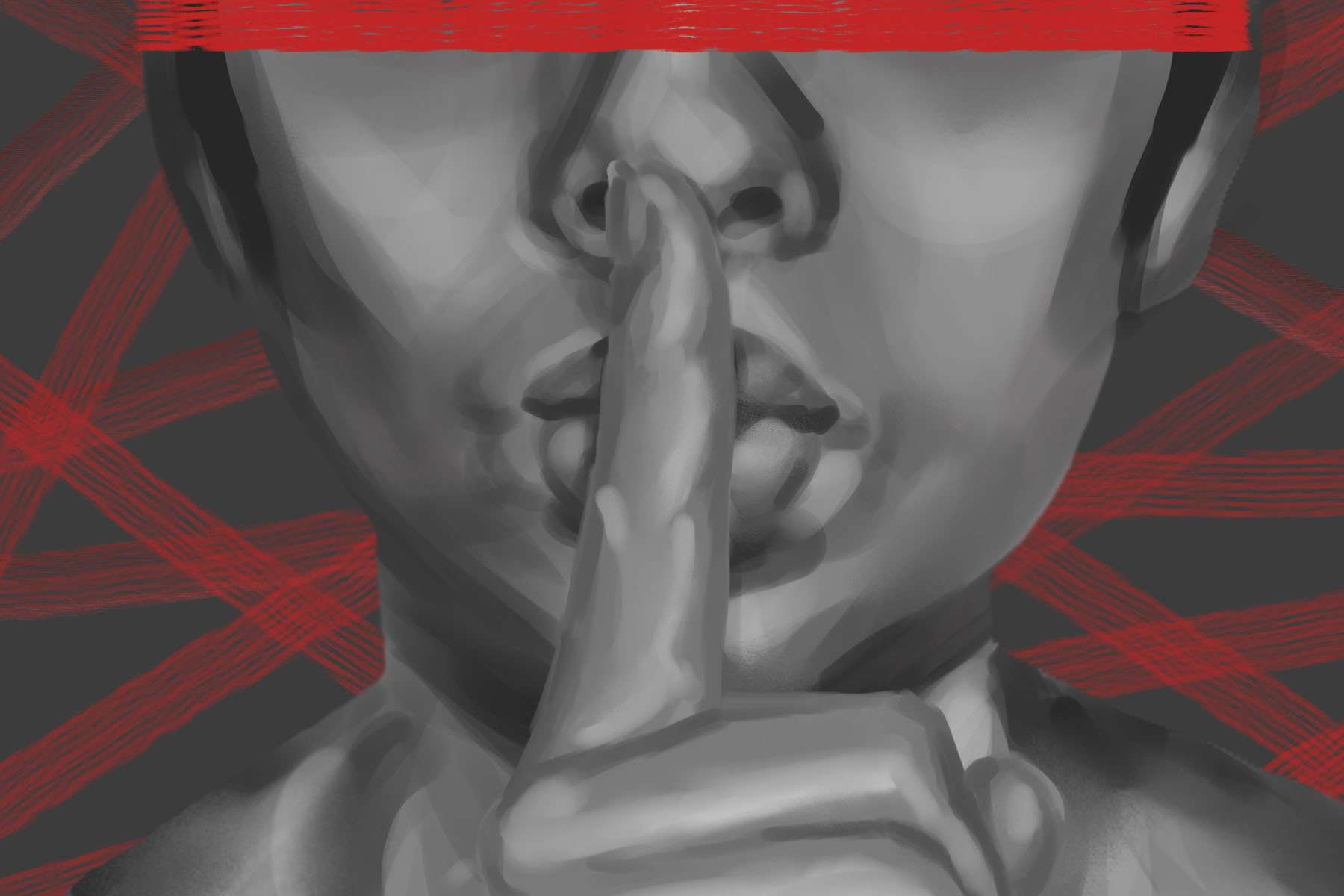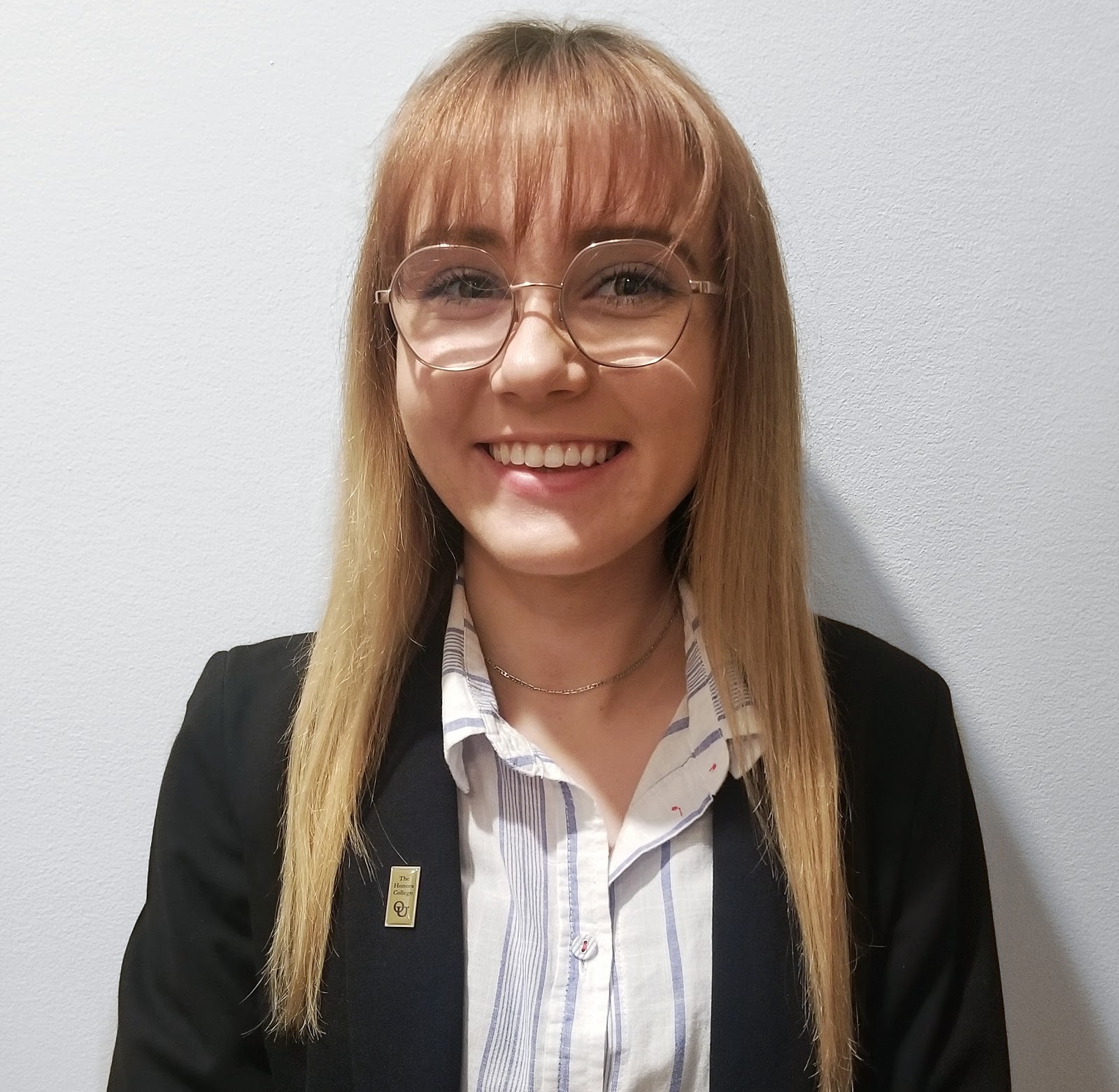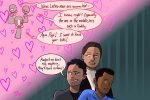Published in 2017, Karen M. McManus’ debut novel, “One of Us Is Lying,” spent more than 130 weeks on the New York Times bestseller list. It is a young adult mystery novel with multi-perspective narration following four suspects in the murder of a fellow classmate.
The story begins when five Bayview High students enter detention on a typical Monday after school, all for the same crime — breaking the school’s strict no-phone policy. The five students, Bronwyn, Addy, Nate, Cooper and Simon, may or may not have known each other to varying degrees, but none of them are friends.
When the teacher, Mr. Avery, steps out of the room, Simon suffers from a fatal allergic reaction. His death, however, is not as accidental as it may seem according to investigators. Simon was the creator of “About That,” the high school’s widely renowned gossip app. He was preparing to release the dirt on all four of his fellow detainees on Tuesday, giving each individual a motive for murder.
The setup of “One of Us Is Lying” mirrors that of John Hughes’ 1985 film, “The Breakfast Club.” In the coming-of-age classic, five Shermer High School students from different cliques spend a Saturday in detention. The group shares disdain for their strict assistant principal, Mr. Vernon, and they later bond as they talk, smoke weed and reveal their secrets. Each character walks into detention as the embodiment of a stereotype and walks out as a multi-dimensional member of the Breakfast Club.
“One of Us Is Lying” upholds the stereotypes introduced in “The Breakfast Club.” Bronwyn Rojas plays the role of “the brain” like Shermer High’s Brian Johnson; Adelaide “Addy” Prentiss is “the beauty” or “princess” like Claire Standish; Nate Macauley is the John Bender or “the criminal”; Cooper Clay is the Andrew Clark athlete character; and finally, Simon Kelleher fills the shoes of Allison Reynolds as ‘the outcast” or “the basketcase.”
Fulfilling the Archetypes
Bronwyn is a Yale-bound, straight-A overachiever from a well-off family of Ivy League graduates. She is a mathlete and in every other extracurricular, much like her “Breakfast Club” analogue, Brian, who’s in “the math club, uh, Latin, and the physics club … physics club.” The others perceive both characters as poster children perfect in the eyes of every adult. Both Bronwyn and Brian feel enormous pressure from their families to excel academically, driving them to commit impulsive, volcanic acts, causing them to hide from everybody, including their parents.
Addy is a member of the popular clique at school and her personality is camouflaged by her always-present boyfriend, Jake. Despite convincing everybody that they’re the perfect high school sweethearts, Jake is controlling and overbearing, which only Addy’s older sister, Ashton, notices.
While Claire from “The Breakfast Club” does not have a boyfriend, Addy’s thoughtlessness mirrors Claire’s obsession with status and her many experiences of peer pressure. Both characters have strained relationships with their parents and the role of Ashton is a nod to Claire’s comment that she’d live with her older brother when asked off-hand to choose between her two parents.
Nate is the model bad boy who rides a motorcycle, carries a flask of Jim Beam and is on probation for selling drugs to pay for his and his father’s expenses. His mother was a bipolar drug addict who left their family years prior and his father is an alcoholic whose primary source of income is a disability allowance from his work injury.
Similarly, Nate’s “Breakfast Club” counterpart, John, is the reckless badass who stores his marijuana stash in his locker, or Brian’s pants, and disregards the opinions of his peers. John has an estranged relationship with his parents. Like other members of the Breakfast Club, his reenactment of them portrays his father as an abusive alcoholic and his mother as cold and uncaring.
Cooper is a star baseball player looking to earn a college scholarship. His father is intensely focused on his son’s athletic career, insisting that his son learn to write with his right hand in second grade after he first saw him pitch so that he wouldn’t “waste [his left arm] on crap that don’t matter.”
Likewise, in “The Breakfast Club,” Andrew’s dad was a jock who now pressures his son to wrestle, even though Andrew doesn’t even like wrestling. And just as Cooper is a kind people-pleaser attempting to keep his secret to himself, Andrew just does what other people tell him to do without ever thinking for himself.
Lastly, Simon crowned himself the omniscient narrator because of his tea-spilling “About That” app. He was the eyes, the ears and the puppeteer of the school with mysterious sources everywhere. He was both feared and hated because his posts were never wrong, and thus, he was outcasted. He was observant, being the first to point out that the others are “walking teen-movie stereotypes.”
His enigmatic “Breakfast Club” parallel, Allison, does not fit in with the others either. She bites her nails, adds dandruff snow to a drawing and has a balanced lunch of a cereal and sugar sandwich after chucking her lunch meat onto the statue beside her. Allison is also sly and observant, lying about her sexual experiences to make Claire reveal the status of her virginity and pointing out the double-edged sword of society’s treatment of women’s sexuality. Allison shares Simon’s desire to escape due to her unsatisfying home life where her parents ignore her.
Moving Beyond the Archetypes
The characters of “One of Us Is Lying” exemplify “The Breakfast Club” archetypes, but McManus takes the trope a step further by superseding them. “The Breakfast Club” was an era-defining phenomenon focused on the themes of adolescent struggles, peer pressure, parental expectations and dissolving stereotypes. In the novel, McManus further develops her characters to show their personal changes.
In true bildungsroman fashion, her characters not only break down stereotypes among their peers, but change on an individual level. Provided, McManus has more room to develop her characters’ backstories in a 358-page novel as opposed to a 97-minute movie.
Bronwyn discovers that it’s okay to be imperfect and that making mistakes and admitting faults are ways of learning too. Addy actually overcomes shallowness and grows a backbone as she learns to speak her mind. Bronwyn brings out Nate’s warm-hearted side and helps him be who he really wants to be, not just the one-dimensional dead-end criminal that he’s expected to be.
While Cooper was outed unwillingly to his family and school, he recognizes the importance of living an authentic life and begins to reconcile his strained relationship with his father. Simon is the only character who doesn’t get a full arc by the end of the novel because of his death in the second chapter. Despite his physical presence, however, the unveiling of his orchestrated plan provides the reader with insight into his psyche and depression.
Moreover, McManus’s work touches on the issues of substance abuse, depression and struggles with sexual orientation while maintaining focus on the primary theme. The inclusion of other relevant problems distinguishes her novel from “The Breakfast Club,” whose inappropriate insults, derogatory language, hints of sexual harassment and the school’s unsuitable and even misplaced punishments do not age well under a modern lens.
However, it was made in the ‘80s before what is acceptable was redefined, and just as the world’s an imperfect place, it is an imperfect film. “The Breakfast Club” is still a classic that lays a great groundwork for “One of Us Is Lying,” whose fine-tuning revitalizes the film’s classic tropes.

















